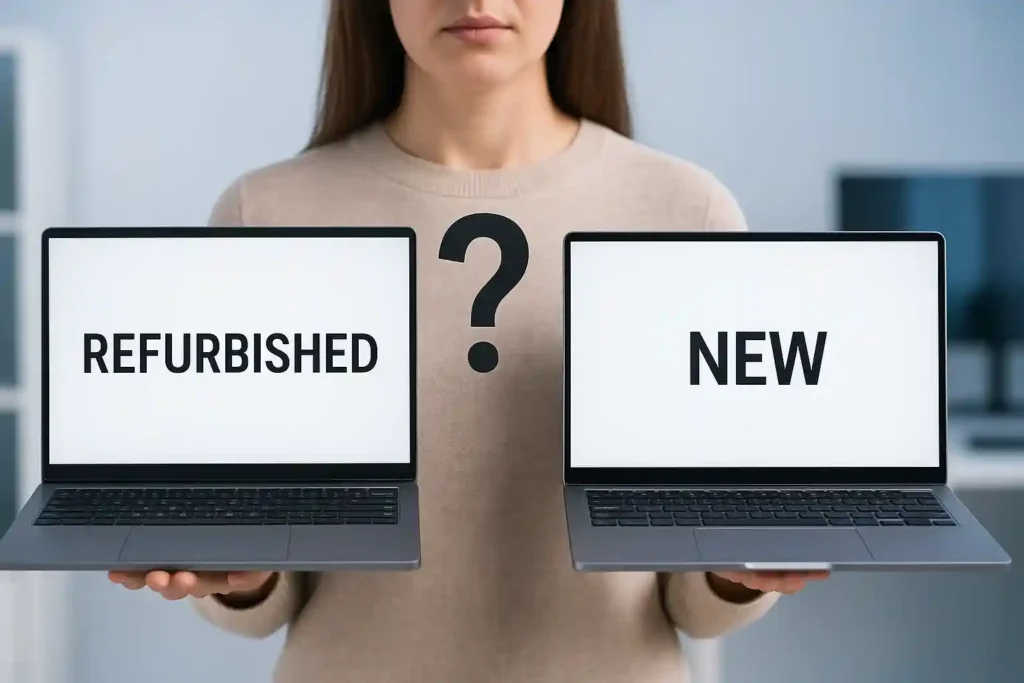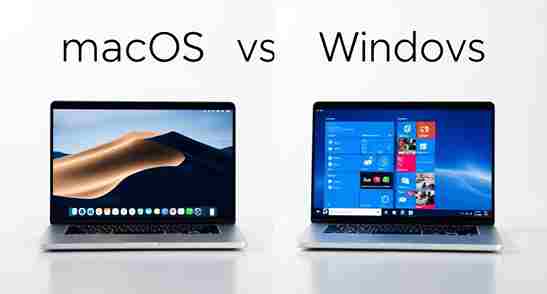Refurbished meaning refers to a product returned, repaired, and prepared for resale. U.S. buyers often ask if this is safe. The question matters because refurbished items are common, from smartphones to kitchen appliances.
Lower cost makes them appealing. Many families, students, and small businesses turn to refurbished products to save money. But doubts appear. Will the item last? Is the warranty strong? Can the seller be trusted? There are clear advantages. Refurbished goods often undergo testing and repair. Some come with warranties and deliver solid performance. Buying refurbished also reduces waste, making it an eco-friendly choice.
Yet, risks remain. Quality can vary. Some products lack accessories or strong support. Warranty terms may also be shorter than new items. This blog explores both sides. You’ll learn what refurbished means, why products take this route, and how to shop safely in the U.S.
What Is the Refurbished Meaning?
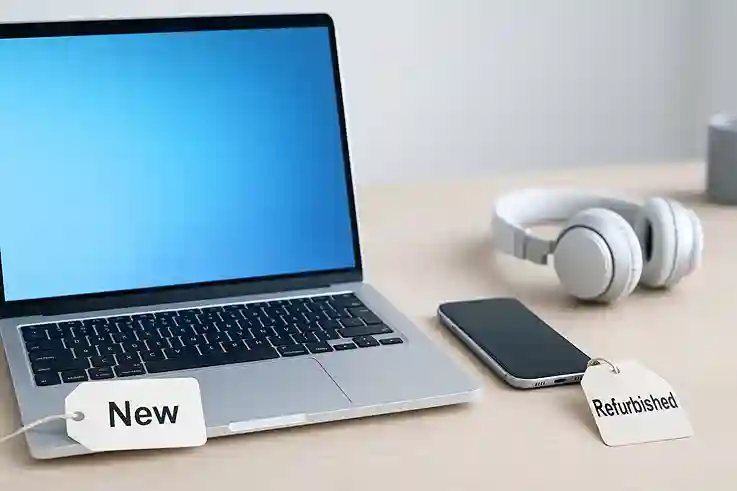
Refurbished meaning is clear: a product returned, repaired, and tested before resale. It is not the same as used. A used item is sold “as-is,” often without checks or fixes. A refurbished item, however, goes through inspection and repair to ensure quality.
The difference from new is also important. New products come directly from the factory. They carry full warranties and no history of prior use. Refurbished products, by contrast, once had an owner or a defect, but they are restored before resale.
This distinction matters because it shapes buyer expectations. New means untouched. Used means no guarantee. Refurbished means tested and improved. Understanding these terms helps U.S. buyers make smarter choices
Why Do Products Become Refurbished?
Common Reasons
Products become refurbished for a few clear reasons. First, customer returns play the biggest role. Many shoppers send back products simply because they changed their minds. Others notice small flaws, like a scratch or a battery issue, and return the item within the store’s policy. Even though these products still work, they cannot be resold as new.
Next, minor defects often push products into refurbishment. A laptop with a broken key, a phone with a weak battery, or a microwave with a faulty button may all enter repair. Once fixed, tested, and certified, these products become suitable for resale.
Finally, overstock adds another source of refurbished goods. Retailers sometimes over-order items or face slow demand. Instead of leaving stock unused, they repackage it and sell it at a lower price. This helps clear shelves while giving buyers access to discounted, like-new items.
The Refurbishment Process
After return or detection, products move through structured steps

Inspect
The first step is inspection. Technicians carefully check the product for any damage, missing parts, or signs of wear. This stage is crucial because it identifies whether the item can be repaired or must be discarded. For example, a laptop might arrive with a cracked screen, or a phone may lack a charger. In either case, inspection ensures no issues go unnoticed before the repair process begins.
Repair
After inspection, the next step is repair. Technicians fix defects or replace faulty parts to restore full function. This stage can involve simple fixes, like tightening connections, or more complex work, such as replacing a battery or screen. For example, a smartphone may need a new charging port, while a laptop might require a fresh keyboard. Therefore, repair ensures the product can meet performance standards before moving to testing.
Test
Once repairs are complete, the product moves to testing. Technicians run checks to confirm full performance and reliability. They examine key features like speed, battery life, sound, and connectivity. For appliances, they confirm functions such as heating or cooling. In addition, stress tests help reveal problems that only appear with heavy use. For example, a refurbished laptop may undergo hours of performance checks to ensure it doesn’t overheat. Testing protects buyers by proving the product meets acceptable standards before resale.
Certify
After testing, the product enters certification. Technicians approve its quality and confirm it meets set standards. Certification may come from the manufacturer or from an authorized third-party refurbisher. Moreover, this step often includes labeling the product as “Certified Refurbished,” which signals trust to U.S. buyers. For example, a certified refurbished smartphone assures the buyer that it functions almost like new and includes support. Certification reduces risk and helps buyers feel more confident about their purchase.
Restore
After certification, the product is prepared for resale. Technicians add packaging, manuals, or missing accessories to make the item complete. Sometimes original boxes are used, but often plain packaging is provided. Additionally, sellers may include essentials like chargers, cables, or adapters so the product feels ready to use. For example, a refurbished laptop might come with a new power cord, while a refurbished phone may arrive with fresh earphones. This step improves buyer confidence and makes the product look closer to new.
Resell
The final step is resale. Once restored, the product is placed back on the market at a lower cost. This price drop makes refurbished items attractive to U.S. buyers seeking value. At the same time, some sellers include a limited warranty or return policy to add security. For example, a certified refurbished phone may cost hundreds less than new yet still include a 90-day warranty. This balance of savings and support explains why refurbished products continue to grow in popularity.
What Buyers Should Expect
This process explains the refurbished meaning in practice, showing why products often look and work almost like new. However, small cosmetic marks may still remain.
The Safety Side: Why Refurbished Can Be a Smart Choice
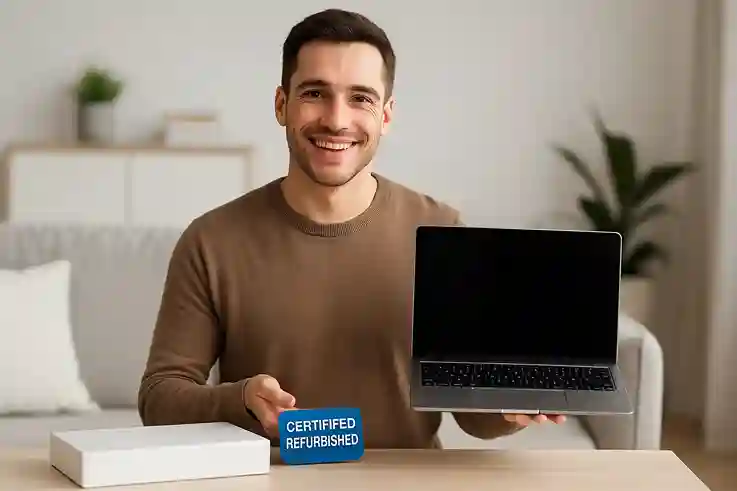
Lower Cost, Near-New Quality
The biggest advantage is price. Refurbished products usually cost far less than new ones. Still, they often deliver solid performance. Picture a college student in the U.S. buying a refurbished laptop. It runs smoothly like a new model but costs only half as much, leaving extra money for books or living expenses.
Certified Testing Brings Reliability
Refurbished items are not just cleaned and resold. They go through testing that checks both safety and performance. Because of this, buyers can trust that the product was inspected and repaired when needed. Imagine a U.S. family buying a refurbished TV. They can feel confident it passed proper tests before arriving in their living room.
Warranty or Guarantee Adds Protection
Many certified refurbished products include a warranty. The coverage is often shorter than new but still offers peace of mind. For example, a refurbished smartphone may come with a 90-day warranty. That gives a U.S. buyer plenty of time to confirm the phone works and fits daily life before fully trusting the purchase.
Eco-Friendly Benefits for U.S. Consumers
Buying refurbished also supports sustainability. These choices cut landfill waste and reduce demand for new production. Therefore, U.S. buyers save money while also helping the planet. Imagine a family in California choosing a refurbished refrigerator instead of a new one. Their decision prevents unnecessary waste, lowers energy use in production, and supports greener living without hurting their budget.
The Risky Side: Where Refurbished Can Go Wrong
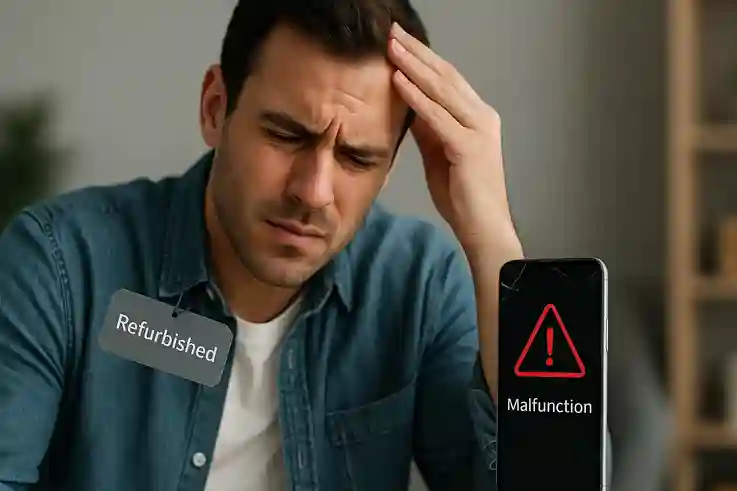
Unreliable Sellers or Uncertified Products
Not all refurbished items are equal. Some sellers skip testing or sell uncertified products. As a result, buyers may face devices that fail fast. Imagine a U.S. student ordering a “refurbished” laptop from an unknown website. It arrives without certification and stops working within weeks, turning the bargain into a loss.
Shorter Warranty Periods
Refurbished products often include limited warranty coverage. Some last only 30 to 90 days. Therefore, buyers get less protection than with new items. Picture a U.S. shopper buying a refurbished phone. It works perfectly for two months but fails right after the warranty ends. The repair bill erases most of the savings.
Cosmetic Flaws or Hidden Performance Issues
Refurbished goods may not look perfect. Scratches, dents, and small wear marks are common. Still, the bigger risk is hidden performance issues that appear later. Picture a U.S. buyer picking up a refurbished tablet. It shows strong battery life at first but drains quickly after a few weeks, leaving the buyer frustrated.
Missing Accessories or Packaging
Some refurbished items arrive incomplete. Chargers, cables, or manuals may be missing. In addition, packaging is often plain instead of factory sealed. Imagine a U.S. gamer buying a refurbished console. The system works, but the controllers are missing. That extra purchase eats into the savings and creates frustration.
Refurbished vs. New vs. Used: Key Differences
Quality and Condition
New products are factory fresh and untouched. Refurbished items are repaired, tested, and often perform close to new. In contrast, used goods are sold “as-is.” They come with no testing, no repairs, and no guarantees. Picture a U.S. buyer choosing between the three. A new laptop offers security, a refurbished one balances value and quality, and a used option brings the lowest price but the highest risk.
Price and Value
New items cost the most. Refurbished products sit in the middle, balancing savings with reliable performance. Meanwhile, used items are cheapest but carry much higher risk. Imagine a U.S. family shopping for a laptop. A new model strains the budget, a used one feels unsafe, but a refurbished option offers both value and trust.
Warranty and Protection
New items usually include full warranty coverage. Refurbished products often come with shorter plans, such as 30 to 90 days. Meanwhile, used goods may offer no protection at all. Picture a U.S. shopper buying a smartphone. With a new phone, they get years of coverage. Refurbished, they get enough time to confirm it works. With used, they risk paying out of pocket if problems appear.
New vs. Refurbished vs. Used
| Feature | New | Refurbished | Used |
|---|---|---|---|
| Price | Highest cost | Lower than new | Lowest cost |
| Condition | Factory fresh, never used | Repaired, tested, near-new | Sold “as-is,” no fixes |
| Warranty | Full coverage | Limited warranty (30–90 days common) | Often none |
| Reliability | Very high | Tested, usually reliable | Uncertain, varies by seller |
| Accessories/Packaging | Original and complete | May include essentials, often generic packaging | May lack parts or manuals |
| Eco Impact | New resources used | Reduces waste, eco-friendly | Reuse, but no repairs |
| Best For | Buyers wanting brand-new security | Value seekers wanting safe savings | Shoppers chasing lowest price |
How to Buy Refurbished Safely in the U.S.
Check Certification and Warranty Details
Certification is the first sign of safety. Certified refurbished products are tested and repaired to meet quality standards. Therefore, always confirm the product includes certification and at least a limited warranty. A U.S. buyer looking at a refurbished phone should see a label like “Manufacturer Certified” before trusting the purchase.
Buy Only from Trusted U.S. Retailers
Not every seller is reliable. Stick with trusted U.S. retailers or official manufacturer outlets. For example, buying from a major electronics store or a brand’s certified refurbished shop adds safety. A U.S. buyer who chooses these options avoids scams and lowers the risk of getting uncertified products.
Compare Prices with New and Used
Savings matter, but context matters too. Always compare refurbished prices with both new and used options. As a result, buyers see if the discount is truly worth it. Picture a U.S. family shopping for a laptop. The refurbished model costs only $40 less than new. In that case, choosing the new one is the smarter move.
Read Customer Reviews Before Purchase
Reviews reveal real buyer experiences. Look for details about performance, condition, and customer service. In addition, pay attention to patterns such as repeated battery problems or missing accessories. Imagine a U.S. shopper reading reviews before buying a refurbished tablet. That extra step could help them avoid a costly mistake and choose a safer deal.
Real-Life U.S. Buyer Stories
College Student Saves on a Laptop
Refurbished meaning became real for Emily, a college student in Texas. She needed a laptop but had a tight budget. New models cost over $1,000, which was far out of reach. Instead, she chose a certified refurbished laptop for about half that price. As a result, she saved hundreds of dollars while still getting the speed and features needed for her online classes. Emily now uses that laptop daily for assignments, video calls, and streaming. For her, the refurbished choice proved both affordable and reliable.
Small Business Owner Upgrades Phones
For Mark, a small business owner in Ohio, the refurbished meaning carried real value. His team’s phones were old and slowing down. Buying new models for everyone would have cost thousands, which his budget could not handle. Instead, he purchased five certified refurbished phones at nearly half the price of new. Therefore, the upgrade gave his employees reliable tools without straining company funds. Today, his staff uses those phones daily for scheduling, client calls, and emails. Mark views refurbished technology as a smart way to grow his business while staying financially responsible.
Family Enjoys Affordable Home Entertainment
Refurbished meaning also mattered to the Johnson family in California. Their old television stopped working, and a new one seemed too expensive. High-end models cost more than $1,200, far above what they wanted to spend. Instead, they chose a certified refurbished TV for several hundred dollars less. Still, the picture quality and sound performance felt almost identical to new. The family now enjoys movie nights without worrying about debt. The savings even left room in their budget for school supplies and groceries. For the Johnsons, refurbished meant entertainment and financial relief at the same time.
“Repair is better than recycling. Repair keeps the world whole.” — Jonathan Chapman
(FAQ) Refurbished Meaning
Conclusion On Refurbished Meaning
The refurbished meaning carries both promise and risk. On one side, you gain savings, testing, and eco-friendly benefits. On the other, you face shorter warranties, cosmetic flaws, or missing parts. Still, with careful choices, refurbished products often strike the best balance of value and reliability. For U.S. buyers, the key is trust. Shop from certified sellers, compare prices wisely, and read reviews before deciding. When done right, refurbished can be a smart way to stretch your budget without sacrificing quality.
Have you ever bought a refurbished product? Did it save you money or cause problems later?
We’d love to hear your story. Share your experience in the comments to help other U.S. buyers make informed choices.

Amina Pierce is a tech-savvy blogger with a specialty in electronics, where she shares practical insights on gadgets, innovations, and the latest trends shaping our digital world. With a strong interest in how technology impacts everyday life, she breaks down complex topics into clear, easy-to-understand articles for readers of all backgrounds. While electronics is her main focus, Amina also enjoys writing on a variety of other subjects, including lifestyle, travel, and personal growth, making her content both diverse and engaging.
Outside of blogging, Amina loves tinkering with new devices, exploring smart home solutions, and capturing her experiences through travel photography. Her blend of technical knowledge and approachable style makes her a trusted source of information and inspiration.
